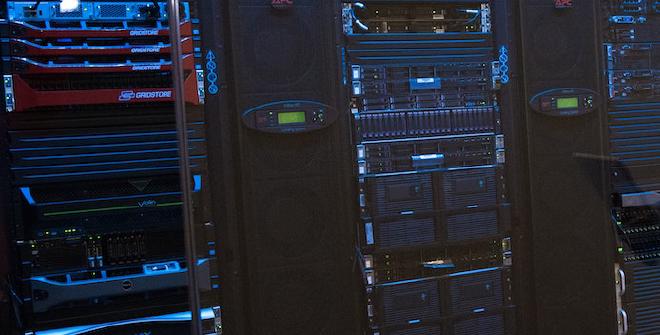What is Hyperconverged Infrastructure

Table of Contents
Hyperconvergence refers to a framework that combines networking, computing and storage into one system in an effort to reduce the complexity of data centers and to increase scalability. Hyperconverged platforms include a hypervisor for virtualized networking and computing, and typically run on basic server systems.
The term hyperconverged infrastructure was coined by Forrester Research and Steve Chambers in 2012 to describe an infrastructure that virtualizes all the elements of a conventional system. This infrastructure typically runs on standard off-the-shelf servers.
Today, companies typically use this infrastructure for virtual desktop infrastructure, remote workloads, and general-purpose workloads. In some cases, companies use it to run high performance storage, mission critical applications, and server virtualization.
The Benefits #
The benefits of hyperconvergence include the fact that it is a hardware-defined system that is geared toward a purely software-defined environment where every element runs on commercial servers. The convergence of elements is facilitated by a hypervisor. These systems are made up of direct-attached storage and includes the ability to plug and play into a pool of data-like systems. All physical resources reside on one platform for software and hardware layers, and as an added benefit, these systems eliminate the traditional data-center inefficiencies and reduces total cost of ownership.
The servers, storage systems and networking switches are all designed to work together as one system, so it increases ease of use and improve efficiency. Companies can start small and grow bigger as scalability will always be an added benefit. It will also lead to cost savings in terms of power and space, and the avoidance of licensed backup and recovery software.
The potential impact is that companies will no longer need to rely on various different storage systems, and it will likely further simplify management and increase resource utilization rates.
There is always pressure on an IT department to provide resources instantly, data volume growth is unpredictable, and software defined storage promises great efficiency gains. These are just some of the trends taking place, which is some of the reasons why hyperconverged infrastructure has become so popular in recent years.
How Does Hyperconvergence Differ From Converged? #
One major difference is that hyperconvergence adds more levels of automation and deeper levels of abstraction. This infrastructure involves preconfigured software and hardware combined in a single system with simplified management.
Where legacy systems relied on separate storage, networks and servers, hyperconvergence allows for the simplicity and reliability of using one single system. This also reduces the risk of failure as silos created by traditional infrastructure present barrier to progress and change.
This technology will simplify datacenter operations by streamlining deployment, management, and scaling of resources. This is achieved by combining the server and storage resources with intelligent software. Separate servers and storage networks can be replaced with a single solution to create a scalable, agile datacenter solution.
The Components Of Hyperconverged Solutions #
There are several components that form a hyperconverged solution, including:
- A Distributed Data Plane: This runs across a collection of nodes and deliver networking, virtualization and storage services for applications. This can either be container-based applications or VMs.
- A Management Plane: This allows for easy administration of all resources with the help of a single view and also eliminates the need for separate servers, virtualization, and storage network solutions. Almost all modern hyperconverged solutions are 100 percent software defined. There is no dependency on hardware, as each cluster runs a hypervisor – such as VMware, Microsoft Hyper-V or Nutanix AHV.
How Is It Sold #
Hyperconverged technology is available as a software-only model, a reference architecture, or an appliance. You can expect bundled capabilities such as data deduplication, data protection, snapshots, compression and WAN optimization, as well as disaster recovery and backup as part of the vendor’s offering.
There are various specialist vendors that include SimpliVity, Nutanix and Pivot3. There are also a few big system vendors that entered the market, such as Dell-EMC, Cisco and HPE. The market for hyperconverged integrated systems (HCIS) is predicted to reach nearly $5 billion by 2019, which represents 24 percent of the overall market, as technology moves to mainstream use.
At the Gartner Infrastructure, Operations & Data Center Summit in Australia, Andrew Butler, vice president at Gartner, said
This evolution presents IT infrastructure and operations leaders with a framework to evolve their implementations and architectures.
He believes that HCIS is not a destination, but an “evolutionary journey”.
The cost of such an infrastructure can vary dramatically, depending on the underlying hypervisor. It depends on the licensing built in, as well as other costs involved in configuring the software for use in a specific environment. Due to the fact that storage is a software service, there is no need for expensive hardware infrastructure, which is an added benefit.
Building a hyperconverged system in a corporate environment is more than just replacing a few devices it requires various aspects and all kinds of IT staff to support it.
Software defined data center solutions manager at Hewlett-Packard, Niel Miles, described “software defined” as programmatic controls of a company’s infrastructure as it moves forward. Existing technology cannot keep up with the changes, requiring additional software.
In Conclusion #
Although the concept is only about five years old, there are a few fundamental differences between hyperconverged infrastructure and converged infrastructure. It’s the latest step In pursuing an infrastructure that is easy and cost-effective to manage, and allows you to tidy up a datacenter infrastructure completely.